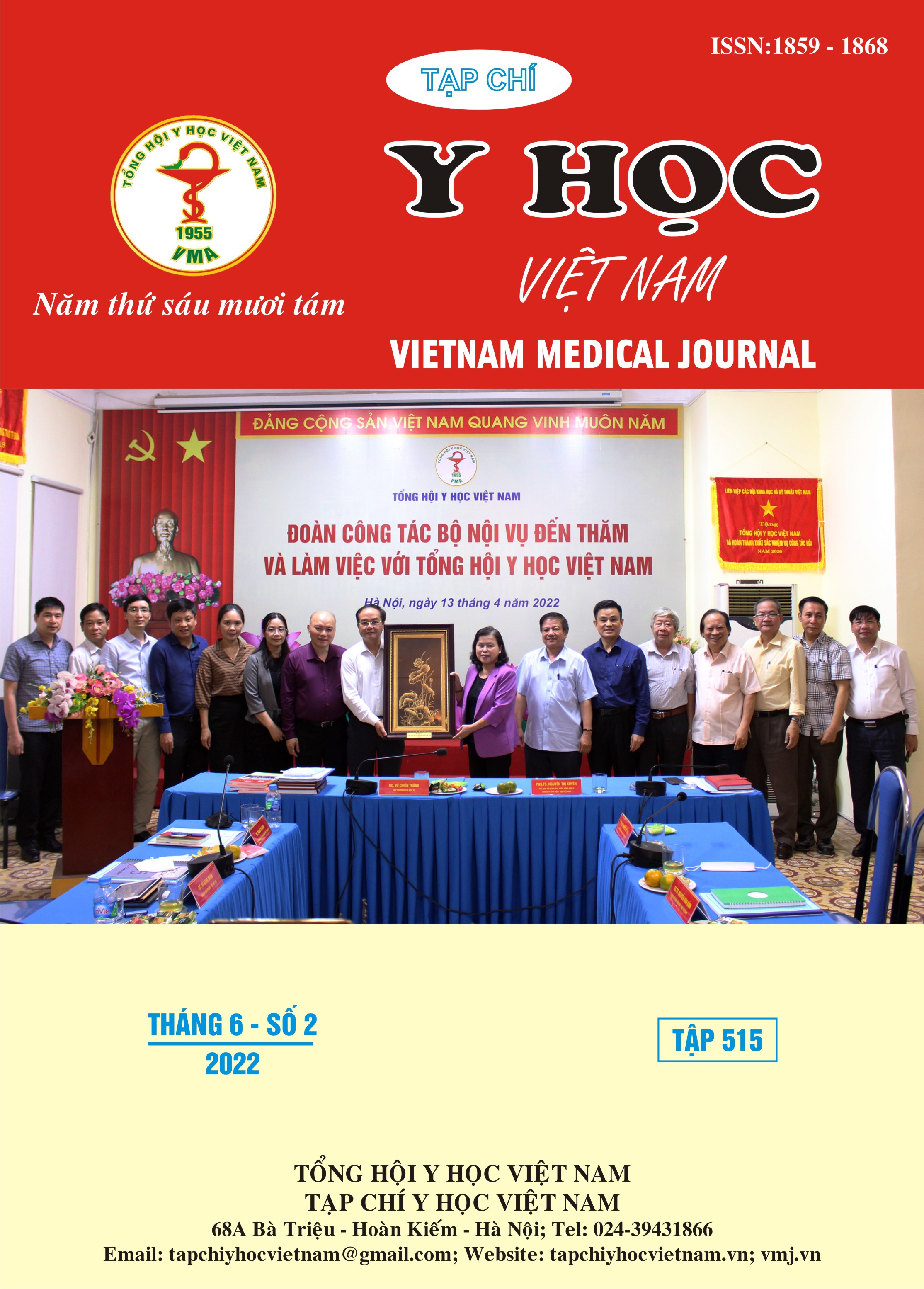FACTORS RELATED TO WALKING REHABILITATION FOR PATIENTS WITH HEMIPLEGIA DUE TO ISCHEMIC STROKE
Main Article Content
Abstract
Objectives: To study the factors related to the outcome of walking rehabilitation in patients with hemiplegia due to ischemic stroke. Patients and methodology: Including 31 patients diagnosed with hemiplegia due to ischemic stroke for the first time being treated at Hanoi Rehabilitation Hospital from August 1, 2020 to May 30, 2021. The patient received rehabilitation training focusing on exercises to increase walking ability during 1 month at the hospital. Evaluation after 2 weeks, 1 month of ability to put weight on the paralyzed side, walking speed, walking rate, stride length, lower limb muscle strength, FAC scale and Tinetti scale. Results: The common age is ≥ 60, accounting for 80,6%, the mean age is 63,6 ± 9,8. The male/female ratio is 1,38. The rate of patients with hemiplegia on the right side is 74,2% and the left side is 25,8%. The common stroke time in the study group was ≤ 12 weeks, accounting for 93,5%. After 1 month of treatment, the result of stroke time before 8 weeks was better than the group with stroke time after 8 weeks and excellent weighting has better walking ability than average and good weighting (p<0.05). However, the results of walking rehabilitation and age group, the results of walking rehabilitation between men and women, the results of walking rehabilitation and the paralyzed side were not different (p>0.05). Conclusion: Time to stroke before 8 weeks resulted in better walking recovery compared to group with stroke time after 8 weeks and excellent weighting had better walking ability than average and good weighting. However, there was no difference between the results of walking rehabilitation and age group, the results of walking rehabilitation between men and women, the results of walking rehabilitation and the paralyzed side.
Article Details
Keywords
factors related, walking rehabilitation, ischemic stroke
References
2. Van Criekinge T., Hallemans A., Herssens N. et al (2020), SWEAT2 Study: Effectiveness of Trunk Training on Gait and Trunk Kinematics After Stroke: A Randomized Controlled Trial. Physical Therapy, 100(9), 1568–1581.
3. Coleman ER, Moudgal R, Lang K, et al (2017), Early Rehabilitation After Stroke:a Narrative Review. Curr Atheroscler Rep;19(12):59. doi: 10.1007/s11883-017-0686-6
4. Schmid A, Duncan PW, Studenski S, et al (2007), Improvements in speed-based gait classifications are meaningful. Stroke;38(7):2096-2100.doi:10.1161/stroke.106.475921
5. De Nunzio AM, Zucchella C, Spicciato F et al (2014), Biofeedback rehabilitation of posture and weight-bearing distribution in stroke: a center of foot pressure analysis. Funct Neurol;29(2):127-134.
6. Gur AY, Tanne D, Bornstein NM et al (2012), Stroke in the very elderly: characteristics and outcome in patients aged ≥85 years with a first-ever ischemic stroke. Neuroepidemiology. ; 39(1):57-62. doi:10.1159 /000339362
7. Trần Thị Mỹ Luật, Dương Hồng Thái (2008), Đánh giá kết quả phục hồi chức năng vận động của bệnh nhân tai biến mạch máu não tại bệnh viện điều dưỡng - PHCN tỉnh Thái Nguyên. Published online.
8. Phan HT, Blizzard CL, Reeves MJ et al (2018), Factors contributing to sex differences in functional outcomes and participation after stroke. Neurology; 90(22):e1945-e1953. doi: 10.1212/ WNL. 000000000 0005602


